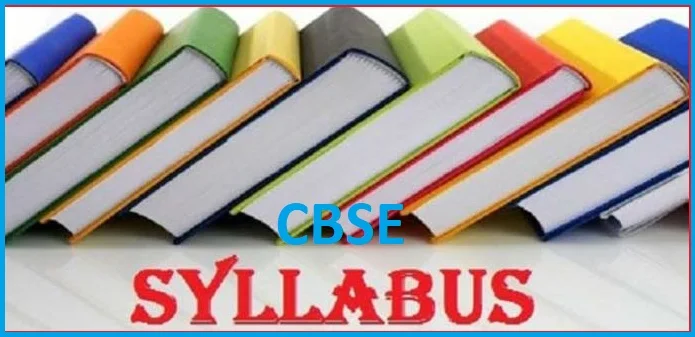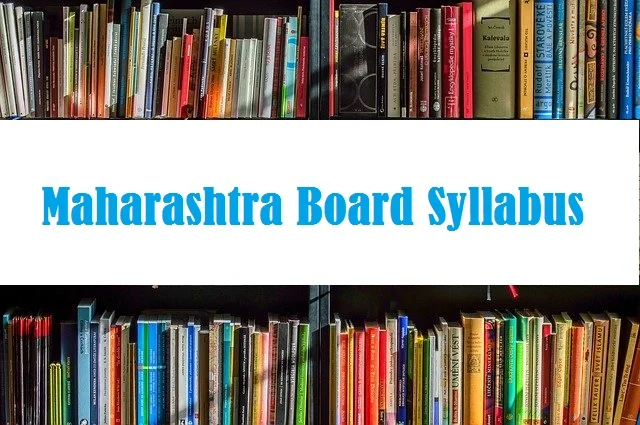CBSE Class 12 History Syllabus 2024-25

CBSE class 12 history syllabus 2024 has been provided below. We have shared CBSE class 12 syllabus of History for 2024-25 according to the new curriculum prescribed by the concerned authority. You can also download CBSE class 12 history syllabus pdf for further use.
CBSE Class 12 History Syllabus 2024-25
Check below CBSE board class 12 History syllabus:
| THEMES | Periods | Marks |
| Themes in Indian History Part-I | 25 | |
| Theme 1 Bricks, Beads and Bones | 15 | |
| Theme 2 Kings, Farmers and Towns | 15 | |
| Theme 3 Kinship, Caste and Class | 15 | |
| Theme 4 Thinkers, Beliefs and Buildings | 15 | |
| Themes In Indian History Part-II | 25 | |
| Theme 5 Through the Eyes of Travellers | 15 | |
| Theme 6 Bhakti –Sufi Traditions | 15 | |
| Theme 7 An Imperial Capital: Vijayanagar | 15 | |
| Theme 8 – Peasants, Zamindars and the State | 15 | |
| Themes In Indian History Part-III |
25 | |
| Theme 9 Colonialism and The Countryside | 15 | |
| Theme 10 Rebels and the Raj | 15 | |
| Theme 11 Mahatma Gandhi and the Nationalist Movement | 15 | |
| Theme 12 Framing the Constitution | 15 | |
| Including Map Work of The Related Themes | 15 | 5 |
| Total | 80 | |
| Project work | 25 | 20 |
| Total | 220 | 100 |
Class 12 History Syllabus 2024-25 CBSE
BRICKS, BEADS AND BONES The Harappan Civilisation
- Familiarize the learner with the early urban centers as economic and social institutions.
- Introduce the ways in which new data can lead to a revision of existing notions of history.
- Find the difference between an archeologist and historian who Investigate and interpret historical and contemporary sources.
KINGS, FARMERS AND TOWNS: Early States and Economies (c.600 BCE600 CE)
- To Familiarize the learner with major trends in the political and economic history of the subcontinent.
- Introduce inscriptional analysis and the ways in which these have shaped the understanding of political and economic processes.
- Critically examine the limitations of inscriptional evidence.
KINSHIP, CASTE AND CLASS, Early Societies (c. 600 BCE600 CE)
- To Familiarize the learners with issues in social history.
- Introduce the strategies of textual analysis and their use in reconstructing social history.
- To appraise the condition of women during Mahabharata age.
THINKERS, BELIEFS AND BUILDINGS Cultural Developments (c. 600 BCE600 CE)
- Discuss the major religious developments in early India.
- Introduce strategies of visual analysis and their use in reconstructing the theories of religion.
- Reconstructing the Mauryan administration with help of Arthasastra Indica and other sources.
THROUGH THE EYES OF TRAVELLERS Perceptions of Society (c. tenth to seventeenth centuries)
- Familiarize the learner with the salient features of social histories described by the travellers.
- Discuss how traveller’s accounts can be used as sources of social history.
- Familiarise with the accounts of foreign travellers in order to understand the social political and economic life in the medieval period.
BHAKTI –SUFI TRADITIONS Changes in Religious Beliefs and Devotional Texts (c. eighth to eighteenth centuries)
- Familiarize the learner with the religious developments
- Discuss ways of analysing devotional literature as sources of history.
- Understand the religious developments during medieval period.
- Understand the religious movement in order and its impact.
AN IMPERIAL CAPITAL: VIJAYANAGARA (c. fourteenth to sixteenth centuries)
- Acquaint the learner with the buildings monuments that were built during the time.
- To examine the ‘excerpts or the sources more closely and discuss the ways in which architecture can be analysed to reconstruct history.
- Analyse city planning, water management system, administration of the rulers with the help of literary accounts of foreign traveller’s and architectural evidence.
PEASANTS, ZAMINDARS AND THE STATE Agrarian Society and the Mughal Empire (c. sixteenth seventeenth centuries)
- Engage the students to discuss the developments in agrarian relations.
- Discuss how to supplement official documents with other sources.
- Elaborate the agrarian changes occurred during sixteenth and seventeenth centuries.
- Explain the changes and differences in the agrarian sectors.
COLONIALISM AND THE COUNTRYSIDE Exploring Official Archives
- Discuss how colonialism affected zamindars, peasants and artisans.
- Explain the revenue systems introduced by the British to Comprehend the problems and limits of using official sources for understanding the lives of the people.
- Discuss about the types of records and reports maintained by the rural society
- Understand the divergent interest of the British in the society and on the Indians.
REBELS AND THE RAJ: 1857 Revolt and its Representations
- Discuss how the events of 1857 are being interpreted.
- Discuss how visual material can be used by historians to narrate events.
- Understand the planning and execution of the plan.
- Highlight the united contribution made by the Indian soldiers.
MAHATMA GANDHI AND THE NATIONALIST MOVEMENT Civil Disobedience and Beyond
- To acquaint the learner with significant elements of the Nationalist movement and the nature of Gandhian leadership.
- Discuss how Gandhi was perceived by different groups.
- Examine how historians need to read and interpret newspapers diaries and letters as a historical source.
- Throw light on nationalism and patriotism.
FRAMING THE CONSTITUTION The Beginning of a New Era
- Discuss how the founding ideals of the new nation state were debated and formulated.
- Understand how such debates and discussions can be read by historians.
- Discuss the other countries constitution and compare.
- Explain the salient features of our constitution.
List of Maps
| S. No | Page No. | Part – I Maps |
| 1 | 2 | Mature Harappan sites: Harappa, Banawali, Kalibangan, Balakot, Rakhigarhi, Dholavira, Nageshwar, Lothal, Mohenjodaro, Chanhudaro, KotDiji. |
| 2 | 3 | Mahajanapada and cities: Vajji, Magadha, Kosala, Kuru, Panchala, Gandhara, Avanti, Rajgir, Ujjain, Taxila, Varanasi. |
| 3 | 33 | Distribution of Ashokan inscriptions: Pillar inscriptions – Sanchi, Topra, Meerut Pillar and Kaushambi.Kingdom of Cholas, Cheras and Pandyas. |
| 4 | 43 | Important kingdoms and towns: Kushanas, Shakas, Satavahanas, Vakatakas,GuptasCities/towns: Mathura, Kanauj, Puhar, Braghukachchha, Shravasti, Rajgir, Vaishali, Varanasi,Vidisha |
| 5 | 95 | Major Buddhist Sites: Nagarjunakonda, Sanchi, Amaravati, Lumbini, Bharhut, Bodh Gaya, Ajanta |
| 6 | 174 | Bidar, Golconda, Bijapur, Vijayanagar, Chandragiri, Kanchipuram, Mysore, Thanjavur, Kolar, Tirunelveli |
| 7 | 214 | Territories under Babur, Akbar and Aurangzeb: Delhi, Agra, Panipat, Amber, Ajmer, Lahore, Goa. |
| 8 | 287 | Territories/cities under British Control in1857: Punjab, Sindh, Bombay, Madras Berar, Bengal, Bihar, Orissa, Surat, Calcutta, Patna, Allahabad |
| 9 | 260 | Main centres of the Revolt of 1857: Delhi, Meerut, Jhansi, Lucknow, Kanpur, Azamgarh, Calcutta, Benaras, Gwalior, Jabalpur, Agra, Awadh |
| 10 | Important centres of the National Movement: Champaran, Kheda, Ahmedabad, Benaras, Amritsar, Chauri Chaura, Lahore, Bardoli, Dandi, Bombay (Quit India Resolution), Karachi |
CBSE class 12 History syllabus pdf 2024-25: Check




Nice nice syllabus